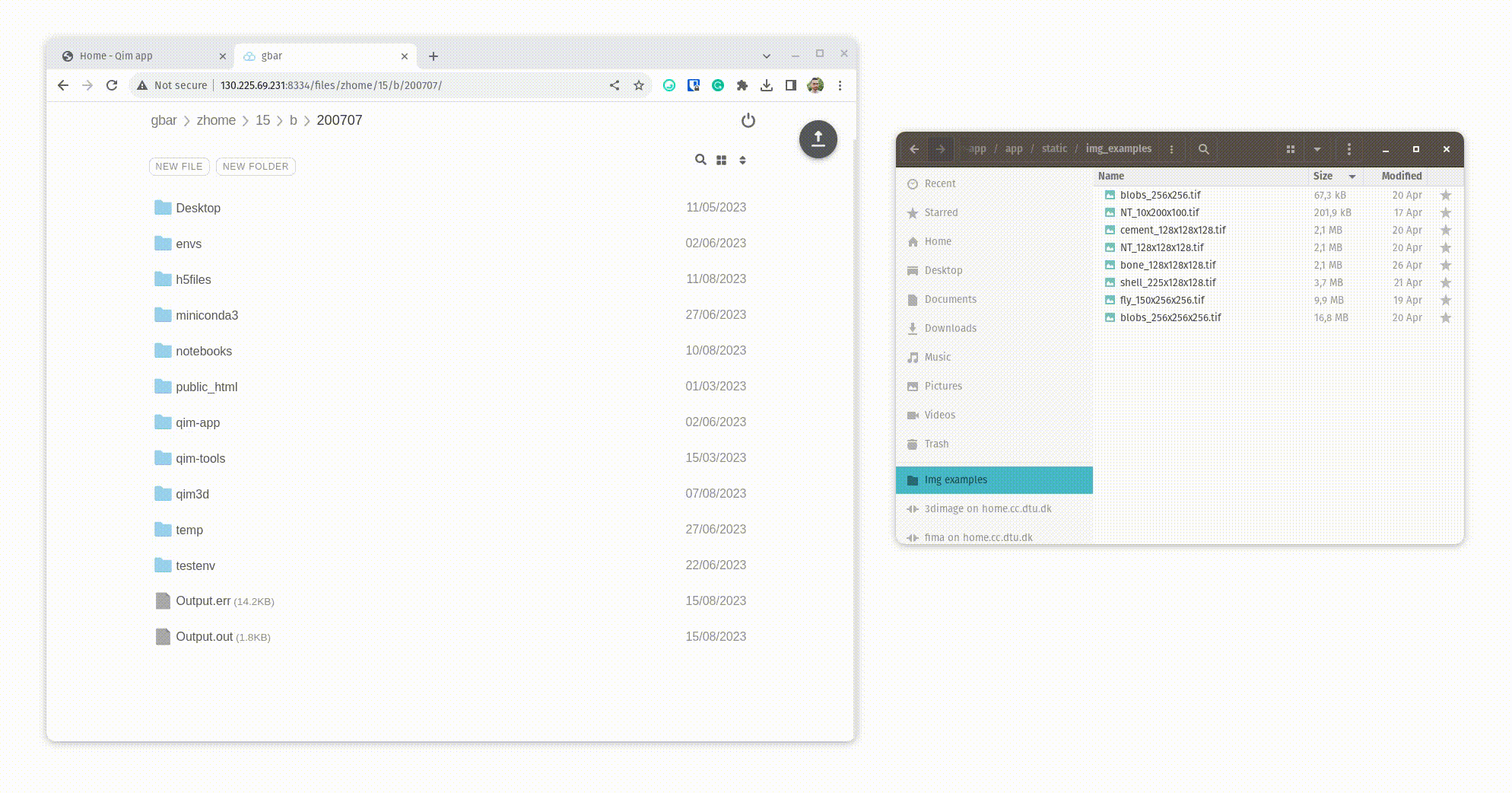QIM platform
making DTU compute resources user firendly and easily accessible

http://qim.dk/cinemax ⟶ http://130.225.68.254:5000/
Login using your DTU credentials


file management

Filestash is a web sftp client, that allows us to easilly upload, download or share data from the DTU Compute servers


Only during the first access the app will ask for you to login again.

Filestash will open your home directory by default
This navigation bar can be used to reach other directories. Click "gbar" for the root directory.


Create new directory

Click to upload files
(or simply drag the files to the top of the interface)



When hovering a directory, you'll see a share button to the right side


The share window allows us to create
links to view or also edit the selected file or directory.
Any user will be able to access the files through the link, without need for a login
This allow us to very easily share content that is located at the DTU file system

The uploader button alows the creation of a page that only allow uploads.
From the link it will not be possible to see the files inside the directory.

⚠️
Attention, all the uploaded files will be owned by the creator of the link, as it does not require login!


If you want colleages to access a given directory as their user, simply copy the url in the address bar and sharewith them
The app will ask for their login, so they'll access the directory
jupyter notebooks

The Jupyter launcher allows us to easily start a new jupyter server that will be running as a job at DTU HPC


The basic config tab asks some information about the server, without being overwhelming to new users


There's the option to select "Use QIM environment" which will start a default conda environment before the jupyter server.

The advanced config tab contains extra information for more specific cases


It is possible to select a GPU queue

You can insert the name of a conda enviroment you have already installed for your user

Or select one of the default QIM enviroments

Here you can define where Jupyter will start
After setting up your parameters, click the Start jupyter server button.
This can be done directly from the Basic config tab also


A log window will give information about how the process goes. When the jupyter server is running, a button to open it will appear


The link containing the token can also be used. You can even share this link with colleagues and they will able to access your server
standalone GUIs

We also aim to develop interfaces to directly use some tools.


The 3D visualization tool allows us to easily make an interactive iso surfaces plot from a volume

It also generates an interactive html file with the visualization, that can be easily shared with colleagues

https://github.com/vedranaa/local-thickness

The 3D local thickness tool is a GUI for the Fast Local Thickness algorithm

The result can be downloaded as a Tiff file
QIM platform
By Felipe Delestro
QIM platform
- 446



